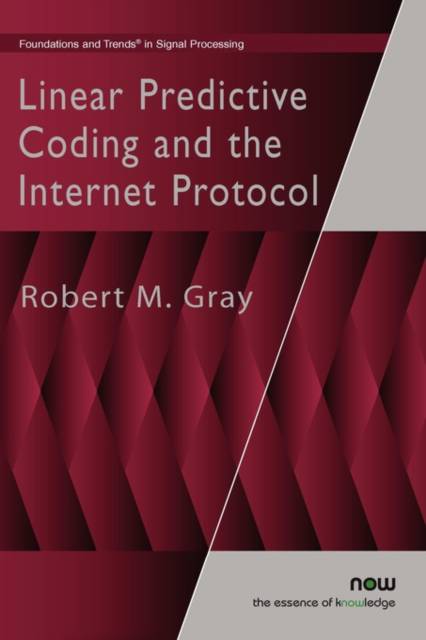
- Afhalen na 1 uur in een winkel met voorraad
- Gratis thuislevering in België vanaf € 30
- Ruim aanbod met 7 miljoen producten
- Afhalen na 1 uur in een winkel met voorraad
- Gratis thuislevering in België vanaf € 30
- Ruim aanbod met 7 miljoen producten
Zoeken
Omschrijving
In December 1974 the first realtime conversation on the ARPAnet took place between Culler- Harrison Incorporated in Goleta, California, and MIT Lincoln Laboratory in Lexington, Massachusetts. This was the first successful application of realtime digital speech communication over a packet network and an early milestone in the explosion of realtime signal processing of speech, audio, images, and video that we all take for granted today. It could be considered as the first voice over Internet Protocol (VoIP), except that the Internet Protocol (IP) had not yet been established. In fact, the interest in realtime signal processing had an indirect, but major, impact on the development of IP. This is the story of the development of linear predictive coded (LPC) speech and how it came to be used in the first successful packet speech experiments. Several related stories are recounted as well. The history is preceded by a tutorial on linear prediction methods which incorporates a variety of views to provide context for the stories. This part is a technical survey of the fundamental ideas of linear prediction that are important for speech processing, but the development departs from traditional treatments and takes advantage of several shortcuts, simplifications, and unifications that come with years of hindsight. In particular, some of the key results are proved using short and simple techniques that are not as well known as they should be, and it also addresses some of the common assumptions made when modeling random signals. The reader interested only in the history and already familiar with or uninterested in the technical details of linear prediction and speech may skip Part I entirely.
Specificaties
Betrokkenen
- Auteur(s):
- Uitgeverij:
Inhoud
- Aantal bladzijden:
- 182
- Taal:
- Engels
- Reeks:
Eigenschappen
- Productcode (EAN):
- 9781601983480
- Verschijningsdatum:
- 5/05/2010
- Uitvoering:
- Hardcover
- Formaat:
- Genaaid
- Afmetingen:
- 156 mm x 234 mm
- Gewicht:
- 430 g

Alleen bij Standaard Boekhandel
+ 97 punten op je klantenkaart van Standaard Boekhandel
Beoordelingen
We publiceren alleen reviews die voldoen aan de voorwaarden voor reviews. Bekijk onze voorwaarden voor reviews.











